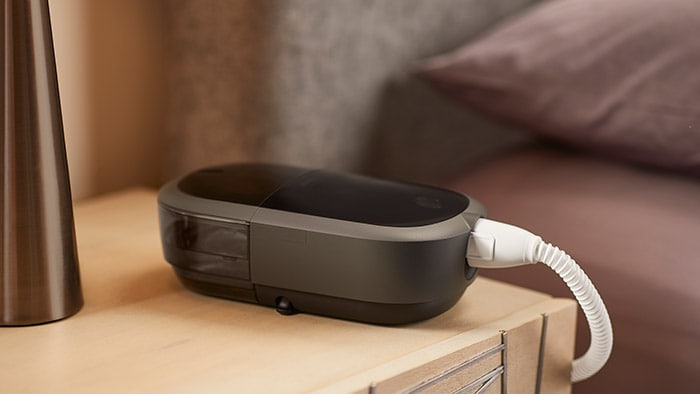Philips Update: Respironics Issues Additional Usage Instructions for Trilogy Evo Ventilators Related to Use of In-Line Nebulizers
Oct 07, 2024 | 3 minute read
Philips Respironics
Philips Respironics issued a voluntary correction for Trilogy Evo, Trilogy Evo O2, Trilogy Evo Universal, and Trilogy EV300 ventilators regarding the use of in-line nebulizers.
An Urgent Medical Device Correction (Field Safety Notice in the rest of world) is being sent to health systems and equipment distributors and is being communicated through this additional update to ensure patients who use the devices at home are informed in a timely manner.
Patients will receive communication from their usual health provider and should not discontinue therapy without consulting their healthcare provider. This update, and the associated Urgent Medical Device Correction (Field Safety Notice in the rest of world) provides instructions for user action and guidance for continued use of affected devices. Philips Respironics is investigating a solution and will provide additional information when available.
Philips Respironics has not received any specific complaints of device malfunctions resulting from in-line nebulizer use. As part of ongoing quality management, the company performed a retrospective review and identified a potential issue with flow sensors. At the time of this notification, no patient deaths have been reported.
An in-line nebulizer is a commonly-used accessory that converts therapeutic liquids (such as medication/saline solutions) into an aerosol to treat different respiratory symptoms.
Philips Respironics has determined that in some circumstances, the use of in-line nebulizers placed in certain locations may lead to aerosol deposits forming over time on the ventilator flow sensor. Should this occur, there is a possibility of inaccurate flow measurements affecting therapy.
Trilogy Evo ventilators that have never been used with in-line nebulizers are not affected by this issue and can continue to be used in accordance with the guidance in the field safety notice.
Potential patient impacts
As indicated in the Urgent Medical Device Correction (Field Safety Notice in the rest of world), if aerosol deposits accumulate over time on the flow sensor, there is a possibility of patient impact due to one or more of the following conditions: the ventilator may become inoperative following stand by or powering off, leading to delay in therapy; and over-delivery of inhaled and exhaled air (tidal volume) and/or under-delivery of oxygen for devices with a specific concentration setting (FiO2).
Potential hazards to patients from these conditions may include: respiratory discomfort; lung injury from too much air in the lungs or change in pressure (volutrauma/barotrauma); low oxygen saturation; or shortness of breath (dyspnea).
Customer / user immediate actions required
1) All Trilogy Evo, Trilogy Evo O2, Trilogy Evo Universal, and Trilogy EV300 users, regardless of in-line nebulizer use are advised to take the following steps from the device Instructions for Use: 2) If using a Trilogy Evo O2, Trilogy Evo Universal, or Trilogy EV300 device with a specific oxygen concentration (FiO2) setting: 3) If using in-line nebulizer treatments:
Customers who require further information or support concerning this issue, may contact their local Philips Respironics Customer Service at:
Any adverse events experienced with the use of this product should be reported to the FDA’s MedWatch Program by phone at 1-800-FDA-1088, by fax at 1-800-FDA-0178, by mail at MedWatch, HF-2, FDA, 5600 Fishers Lane, Rockville, MD 20852-9787, or on the MedWatch Web site at www.fda.gov/medwatch.
Contacts:
Customers:
Philips Respironics Customer Service
1 (800) 345-6443 for DME and homecare customers
1 (800) 722-9377 for hospital customers







